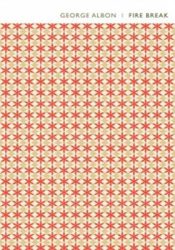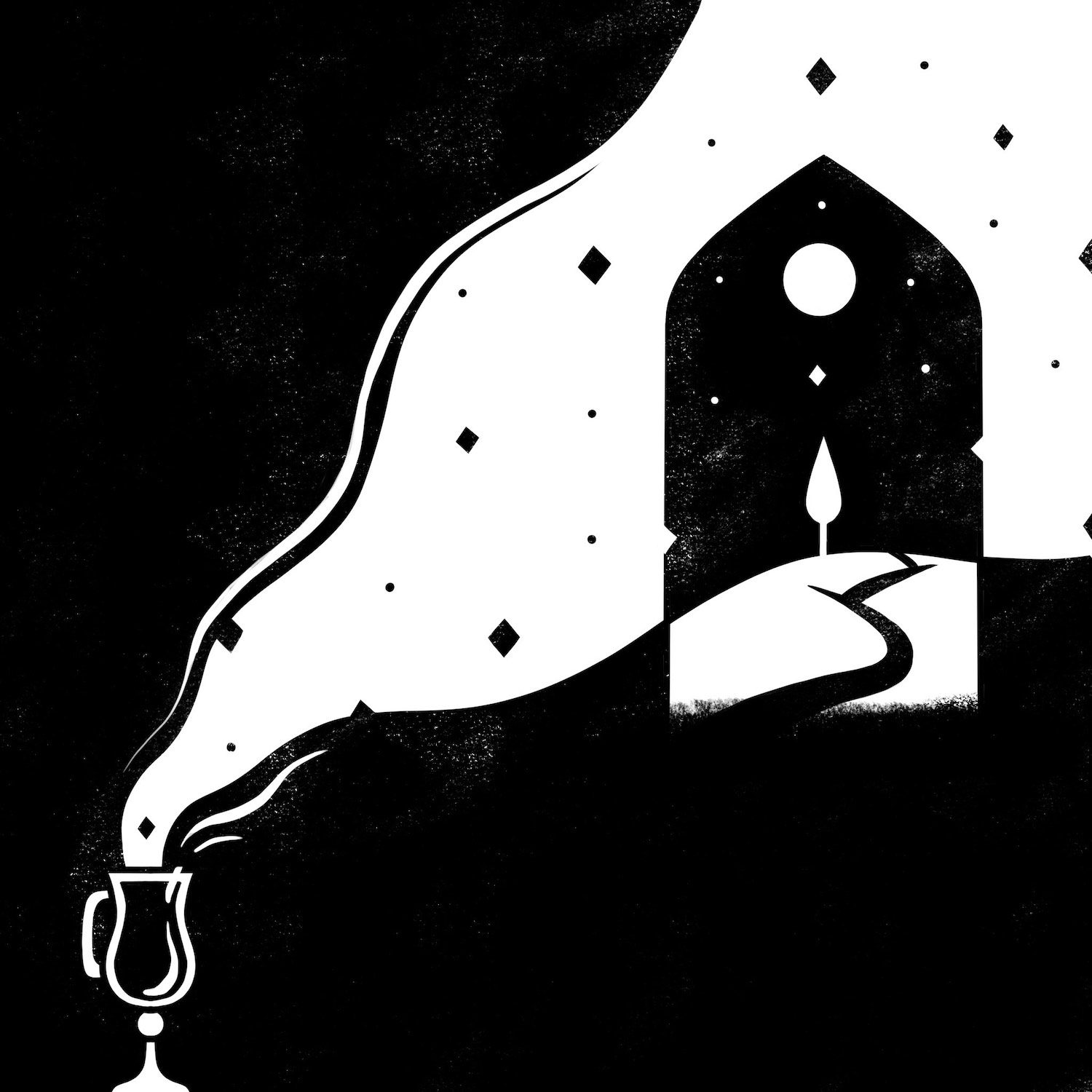
An ancient and fundamental cord began to vibrate in me when I read the first poem of Fire Break, the sure-footed latest from George Albon. Well, not exactly ancient in terms of human civilization, but certainly ancient in terms of my poetic education. See if you can spot the reference:
When they told the myth in the present tense
I looked around
I had things behind me all scattered walls
I fronted them
I started out, then I was fore,
a vertical applying
watching broad shapes to find the inaugural
moment (9)
If, like me, reading this passage put you in the way “of three minds,” then you, too, recognize Albon’s opening as an homage to Wallace Stevens’s “Thirteen Ways of Looking at a Blackbird,” with their shared senses of the recursive, improvisatory and oracular. Albon, like Stevens, deploys description as a means of examining the lens through which the description passes, ostensibly unimpeded. Also like Stevens, Albon is obsessed with the task of locating the viewer in time (“I do not know which to prefer, […] The blackbird whistling / Or just after” : “I was fore, / a vertical applying”).
“Thirteen Ways” appeared in Harmonium nearly a century ago, a fact that both highlights Stevens’s prescience but also makes me marvel that I find Albon’s take as compelling as I do. Part of it has to do with ego and understatement. That Albon writes declaratively from the first person and yet clearly reveals himself as subject to greater forces speaks to the balance required to pull off personal metaphysic. He is merely a bystander in the myth “they told,” rather than guilty of self-mythologizing.
Of course, neither Stevens nor Albon controls the market on personal metaphysic. Part of what makes Albon’s exploration uniquely compelling is that it collapses the known and the unknown in ways that are demonstrable and immediately apparent. Take, for instance, his narration of a captured landscape:
In pictures, creatures were others’ edges. Leaves were a fox, the fox was the shape of the space between the leaves: fox-shape from leaf-space. […] It was a picture, it was a “world.” The foreground was improbably well-stocked. In the try for balance the atoms of balance were lost. […] Flexing, one releases the textures that will push one’s native modulations into the land. (20)
The reader is left with the sense of perception as being ‘foxed’ in the sense of ‘vexed.’ Three dimensions (and the implied position of the viewer) are collapsed to two, and those are compressed further by the airlessness of the margin between things. Although Albon’s precise experience may remain elusive, I suspect that anyone who has been overwhelmed by a display of beauty will understand the insistent visual presences Albon articulates.
One of Stevens’s most unguardedly personal moments is also one of his most inscrutable, and famous: “I placed a jar in Tennessee.” Thus, the poet takes his leave. Albon’s approach is similarly impersonal, but not by choice. The world all around is what happens to the subject, and in that way it is the external that is endowed with animation: the self is merely the vacuum at the center. So, a moment telegraphed as confidential (“I went over / to the accidental shelf” [42]) quickly becomes estranged (“I found a statement / that called me in its curve”). Reminiscences arrive and vanish by unintelligible mechanism (“Waking tracks in the sky, and the memory / parachutes into / disappearing”). Tell this to anyone who thinks the self is merely the sum of accumulated, mentally catalogued experiences. As Albon declares, “what is is / and I vehicle” (56).
The poems constituting Fire Break are beautiful and moody, but I wonder if the title might be signaling a necessary defensiveness (a controlled burn), a survivalist instinct at work. Albon’s exploration of time and perception seems an effort at forestalling a romantic attachment to the world. To what extent is living in the head a retreat from reality or a further pursuit thereof? This unresolvable question directs me to another selection from Harmonium, “Metaphors of a Magnifico”:
[…] Twenty men crossing a bridge,
Into a village,
Are
Twenty men crossing a bridge
Into a village.
That will not declare itself
Yet is certain as meaning…
The boots of the men clump
On the boards of the bridge.
[…] Of what was it I was thinking?
So the meaning escapes […]
 Surely, the footfalls of those men sound with the anguish of war-ravaged Europe. Stevens’s songsterism, his inclination to shift even conquest into musical variation and refrain, to “play” war, is tested cyclically through the poem against the nihilistic realities. In high-modernist tradition, Stevens’s impersonality is a psychological necessity, a fully understandable response to a world that seemed to have gone far off the rails.
Surely, the footfalls of those men sound with the anguish of war-ravaged Europe. Stevens’s songsterism, his inclination to shift even conquest into musical variation and refrain, to “play” war, is tested cyclically through the poem against the nihilistic realities. In high-modernist tradition, Stevens’s impersonality is a psychological necessity, a fully understandable response to a world that seemed to have gone far off the rails.
What, then, is the necessary origin of Albon’s impersonality? If the kinship with Stevens and his poetic contemporaries holds, then the origin and purpose are vestigial, formal rather than felt. But Albon’s predilection for mythos provides the authentic connection:
They blow up strips of the geoplast and take things, coal, and crush things, gravel. They do this during the long nights and hooked together so that it is an endless night […]
Products say to do that.
The rock moved to here, it became us […]
Then: built the location: then: they left. Building was the pact, populating would have to do with others. There were low divisions, shaken quickly from someone’s utility-grade sleeve, large picture windows still bearing tape and grease-pencil signs of first delivery […]
A ghost town in reverse
In recounting the depredations of strip-mining, followed by the rise of suburbia—that further insult visited upon the land—Albon catalogues the construction of a distinctly American spiritual emptiness. The truncation of syntax reinforces that this “creation myth” overwhelms our collective consciousness like a sketchily-recalled nightmare. It’s an America that Stevens might not recognize, but a feeling he certainly would.
As with his predecessor, Albon is similarly taken with abstraction. Stevens, however far he detours into abstraction, seems to have worked out a mental blueprint well before beginning his compositions. There is a movement, a directionality that convinces the reader to place his or her trust in an eventual payoff. Albon, on the other hand, works things out before us, with us:
[…Y]our
care walking through
A prehensile glimpse
on the edge of eternity
calling for catching
Trouble-knot
Moved is led
The use of the gerund signals compositional—as well as thematic—problem-solving on the fly, and ‘eternity’ is an abstraction we can easily define but never comprehend. This is no criticism of Albon, really—I rather enjoy his open and provisional approach—but it certainly underscores his distance from the appearance of infallibility cultivated in Stevens’s work. It helps that Albon himself anticipates criticism on this account, noting, “Below is the grid of living bound in time, a deaf lessening, made of concretes” (26). His concerns are with the “grid,” rather than the “concretes.” Albon is a worthy bearer of Stevens’s torch; how gratifying that the former should do so well into the twenty-first century, while forging a personal metaphysic that speaks to the challenges of a world with resources and psyches under pressure.





